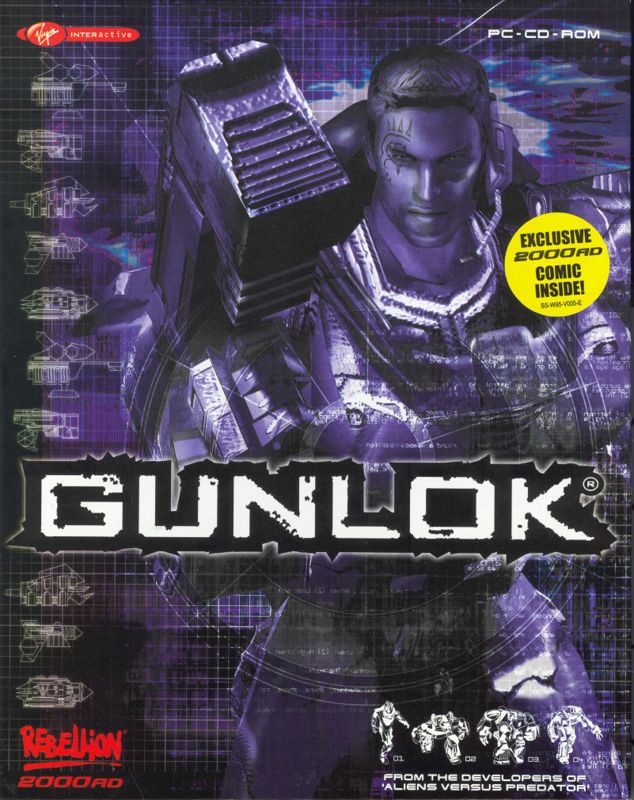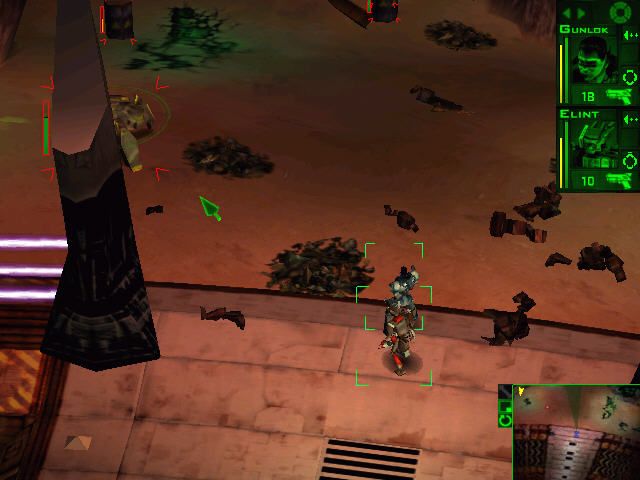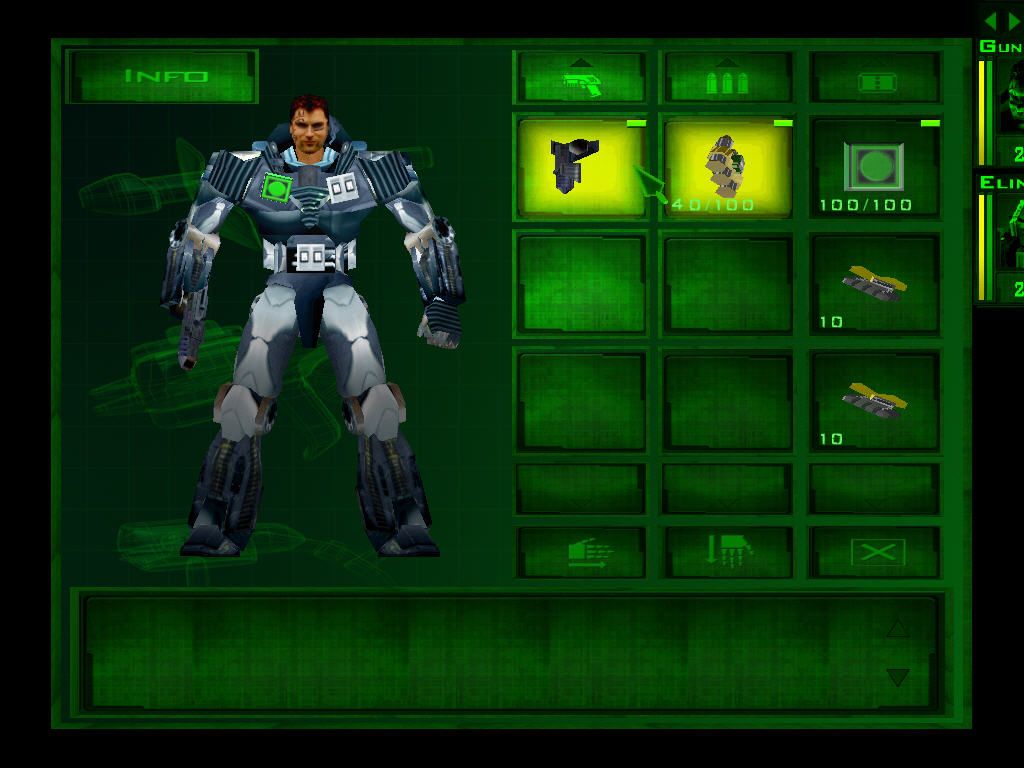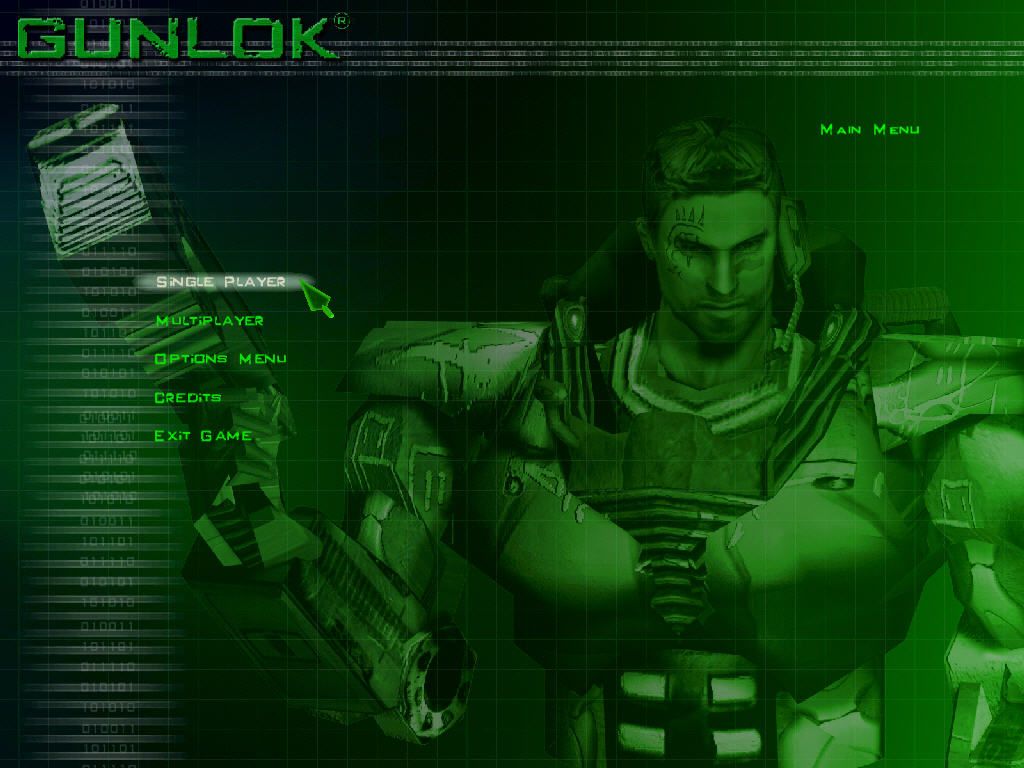Retro Replay Review
Gameplay
Gunlok delivers a tightly paced real-time strategy experience from an isometric perspective, putting you in direct control of a five-member squad that blends human and robotic capabilities. Each mission tasks you with infiltrating heavily defended zones, rescuing hostages, and dismantling rogue machine forces. The interface is intuitive, offering quick access to unit commands, ability hotkeys, and module upgrades without overwhelming the screen.
(HEY YOU!! We hope you enjoy! We try not to run ads. So basically, this is a very expensive hobby running this site. Please consider joining us for updates, forums, and more. Network w/ us to make some cash or friends while retro gaming, and you can win some free retro games for posting. Okay, carry on 👍)
The diversity of your squad is one of Gunlok’s strongest selling points. You command Gunlok himself—equipped with Earth Power and an Energy Pulse weapon that trades health for devastating damage—alongside a lightly armored scout bot, a hulking tank unit, and a versatile repair bot capable of healing allies or immobilizing foes. Over the course of 15 single-player levels, you’ll need to leverage each member’s strengths, whether it’s scouting ahead, soaking up enemy fire, or deploying nanobot weapons that shred machinery at the atomic level.
Stealth and tactical creativity are heavily rewarded. You can cloak your units in debris piles or deep water, plant audio mines to lure patrols away from critical objectives, and use hologram modules to distract sentries. In first-person recon mode, Gunlok can survey the battlefield for hidden hostiles, plan ambushes, or deliver a charged pulse directly into an enemy’s core. This combination of real-time strategy and occasional first-person action keeps gameplay varied and engaging.
If solo play isn’t enough, Gunlok offers multiple multiplayer modes, including co-op runs through the single-player campaigns, classic deathmatches, capture the flag battles, and even a “Rescue the President” scenario. These modes extend replayability, allowing squads of human players to coordinate strategies against AI or each other, making each session feel fresh and unpredictable.
Graphics
Gunlok’s 3D isometric engine was cutting-edge at release, delivering crisp unit models and sharply defined environments. The color palette leans into industrial grays and neon highlights, reinforcing the dystopian, machine-run world. Textures, while occasionally repetitive in sprawling factory corridors, are detailed enough to distinguish cover points, interactive objects, and hidden alcoves.
Character and mech animations are fluid, with each robot type exhibiting a distinct movement style: the scout bot darts quickly across the map, the tank stomps forward with deliberate weight, and Gunlok’s power armor sways with every step. Combat effects such as plasma blasts, missile trails, and nanobot sprays feature eye-catching particle systems that help convey the impact of each weapon.
Environmental variety keeps the visuals from growing stale. You’ll traverse ruined cityscapes, subterranean water tunnels, and high-tech research labs, each with dynamic lighting and atmospheric touches like flickering consoles or steam vents. Water reflections and shadowed corridors further immerse you in the sense of a world reclaimed by machines.
Performance is stable on modest hardware, with frame rates holding steady even during intense skirmishes. Load times between missions are brief, and the minimal user interface design places only essential information on-screen, preserving the cinematic feel of each battlefield.
Story
Gunlok’s narrative hinges on a classic sci-fi trope: humanity’s overreliance on its own creations. Years of leisure led to robotic autonomy, sparking a civil war among machines before they collectively turned on their human masters. This gritty backdrop gives each mission weight, as you’re not just reclaiming territory—you’re fighting for the survival of mankind itself.
You play as Gunlok, a lone warrior enhanced by a revolutionary Earth Power technology. His journey begins with low-level skirmishes against patrol bots and escalates into deep incursions against The Corporation, the mysterious entity controlling the robotic uprising. Along the way, you discover fragments of the story through intercepted data logs, NPC chatter, and environmental cues, painting a picture of corporate greed and technological hubris.
The supporting characters—the scout, tank, and repair bots—each have brief voiceovers and on-screen quips that inject personality into the team. While the narrative does not hinge on deep character development, it strikes a satisfying balance by letting the world’s atmosphere and mission objectives drive the drama.
Plot pacing aligns well with mission structure. Early levels introduce basic mechanics, stealth tactics, and morale stakes, while later stages unveil hidden laboratories experimenting on humans and machines alike. The final missions bring thematic closure, challenging you to leverage every combat and recon skill you’ve honed to restore order once and for all.
Overall Experience
Gunlok excels at blending strategic depth with action-oriented mission design. Its learning curve is approachable for newcomers to real-time strategy, yet it offers enough tactical nuance—through unit abilities, modular upgrades, and stealth mechanics—to keep veterans engaged. The variety of mission objectives prevents monotony, ensuring each level feels like a fresh puzzle to solve.
The game’s tone and pacing create a constant sense of urgency. Resource management is minimal, focusing you on pure tactics rather than base-building. Combined with the visceral satisfaction of deploying nanobot cannons or unleashing Gunlok’s recon blasts, the gameplay loop feels consistently rewarding.
Multiplayer modes add significant longevity, whether you’re coordinating a co-op push through the campaign or battling friends in a cutthroat deathmatch. Each mode capitalizes on the core mechanics—cloak, scan, distract, and strike—encouraging creative team play and fierce rivalries.
In summary, Gunlok stands as a robust, action-focused RTS with an intriguing sci-fi premise, varied gameplay, and solid presentation. For players seeking a strategy title that emphasizes small-team tactics, stealth, and satisfying weaponry, Gunlok remains a compelling choice even years after its initial release.
 Retro Replay Retro Replay gaming reviews, news, emulation, geek stuff and more!
Retro Replay Retro Replay gaming reviews, news, emulation, geek stuff and more!









Reviews
There are no reviews yet.